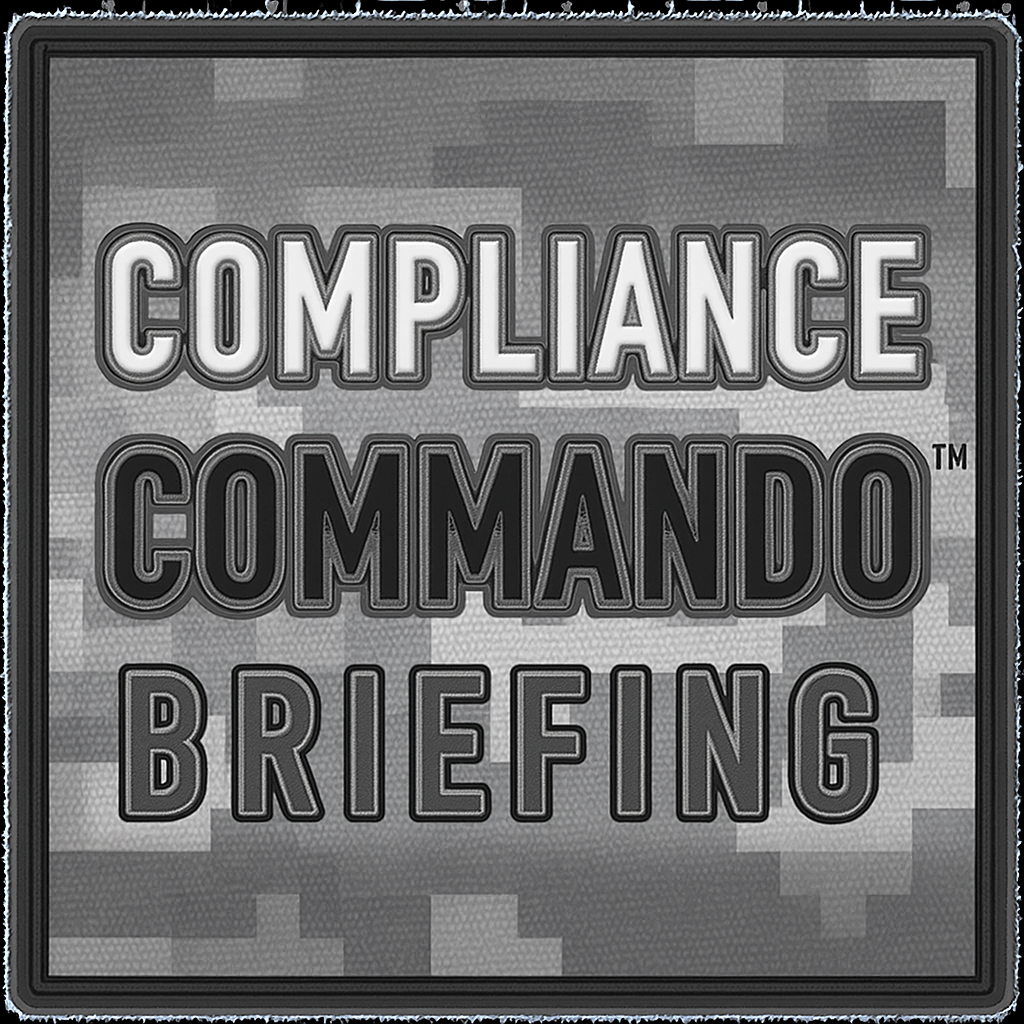Compliance Commando Briefing: Securing the First Three Pillars of Your Compliance Program

Compliance Commando Briefing: Securing the First Three Pillars of Your Compliance Program
We’ve spent the last few posts focused on the prep work of a compliance program. Before we move forward to Element Four, rules and procedures, let’s take a quick look back at the first three.
These are the essentials that set the tone for everything else: oversight, culture, and risk assessment. Or, as we like to think of them, designating a commander, getting the troops fired up, and assessing the enemy.
Oversight
Whether it’s the CEO, the Chief Ethics and Compliance Officer, or another senior leader, this person must be grounded in what we call the Four R’s:
- Role: Clearly defined and understood.
- Responsibilities: Aligned with strategic and operational goals.
- Reporting: Built into a regular cadence to track and course-correct.
- Reach: Sufficient authority and independence to act across the organization.
Getting the Troops Fired Up
Policies and procedures are only half the battle. Culture is what drives behavior. Just as a commander instills values like strength, discipline, and competence in their troops, your executives should be modeling the values your organization stands for.
If leadership sets the tone at the top of the organization, the rest of the company will fall in step.
Assessing the Enemy
No army moves without intel. The same goes for companies. You can’t manage what you haven’t identified. In the corporate world, your enemies are risk areas, and they need to be mapped.
Start with a legal compliance and risk assessment. Identify what potential threats may pose to your specific organization, from a legal, financial, and operational standpoint. Take those threats and try and estimate what financial and reputational risk they’d pose to your company.
Use that information to act proactively. Focus your resources where they’re needed most, and strengthen your company’s ability to prevent unnecessary damage and build long-term resilience.
[Element of a Compliance Program 4 – from Calendar]
The Regulations: Standards and Procedures
Now that our authority, culture, and risk pieces are in place, the next step is to build the framework that sustains it all. Here’s our guide to building effective standards and procedures.
In the military, success in the field depends on a written manual. This guidebook outlines the important “how-to’s” and “what-ifs” that guide decision-making. In the business world, that manual takes the form of a code of conduct, reinforced by standards, policies, and procedures.
But simply having documentation, such as a code of conduct, isn’t enough. Policies that sit on a shelf, disconnected from operations and their associated risks, may even harm your organization.
To build an effective compliance program, use the following steps to ensure your procedures are specific, practical, and offset risk.
Step 1: Target Risk Areas
Start with your risk assessment. Consider this your intelligence briefing—in other words, the information that guides all forward movement. Review your policy library and ensure that each identified risk has clear, actionable controls in place.
Focus first on the highest-risk areas. Any gaps or outdated guidance should be flagged and corrected immediately.
Step 2: Align with Leadership and Core Values
Before drafting or updating your code of conduct, anchor it in your organization’s mission and values. We recommend convening with senior leadership, especially if your organization’s values are unclear or inconsistently applied.
A message from the CEO or other C-suite executives can help set the tone from the top of the company. The message should emphasize the importance of compliance. More importantly, the message should encourage ethical decision-making, such as reporting, and support the company’s long-term success and credibility with stakeholders.
Step 3: Build the Manual
Your “field manual,” or code of conduct, needs to be more than aspirational. Design it with the end user in mind.
- Use clear structure and headings for ease of navigation
- Focus on high-risk, high-impact areas
- Include examples, scenarios, and FAQs to illustrate expectations
- Make reporting mechanisms easy to find and understand
- Clearly state your non-retaliation policy and commitment to protecting those who speak up
Consider the document your operational backbone. It should reflect how the organization functions, guide employees in how to respond under high-stress situations, and reinforce to stakeholders that it follows high standards.
Step 4: Develop a Plan
Even the most well-written policy is ineffective without a plan for implementation. Aim to develop a structured process for communicating your policies across the organization.
Your deployment plan should answer:
- What specific risk or operational need is this policy addressing?
- Is the content accurate, current, and aligned with legal obligations and best practices?
- Who should review and approve the policy?
- How will it be communicated, trained on, and acknowledged?
- What mechanisms will track compliance, exceptions, and accountability?
- Who owns the policy—and what is the schedule for review and revision?
Remember, your code of conduct, as well as your policies, needs to be treated as a living document. It should evolve in response to your risk environment, regulatory obligations, and company operations.
Conclusion: Standards that Strengthen Culture
A strong compliance program is built step by step, creating a disciplined system of authority, culture, and action. Standards and procedures translate values and risk awareness into actionable behavior. When done right, ethical conduct builds confidence, trust, and long-term resilience.
Let’s ensure your field manual is much more than a formality. Let it be the backbone of your compliance mission!
Need an elite task force for your corporate policies? We’re on standby.


